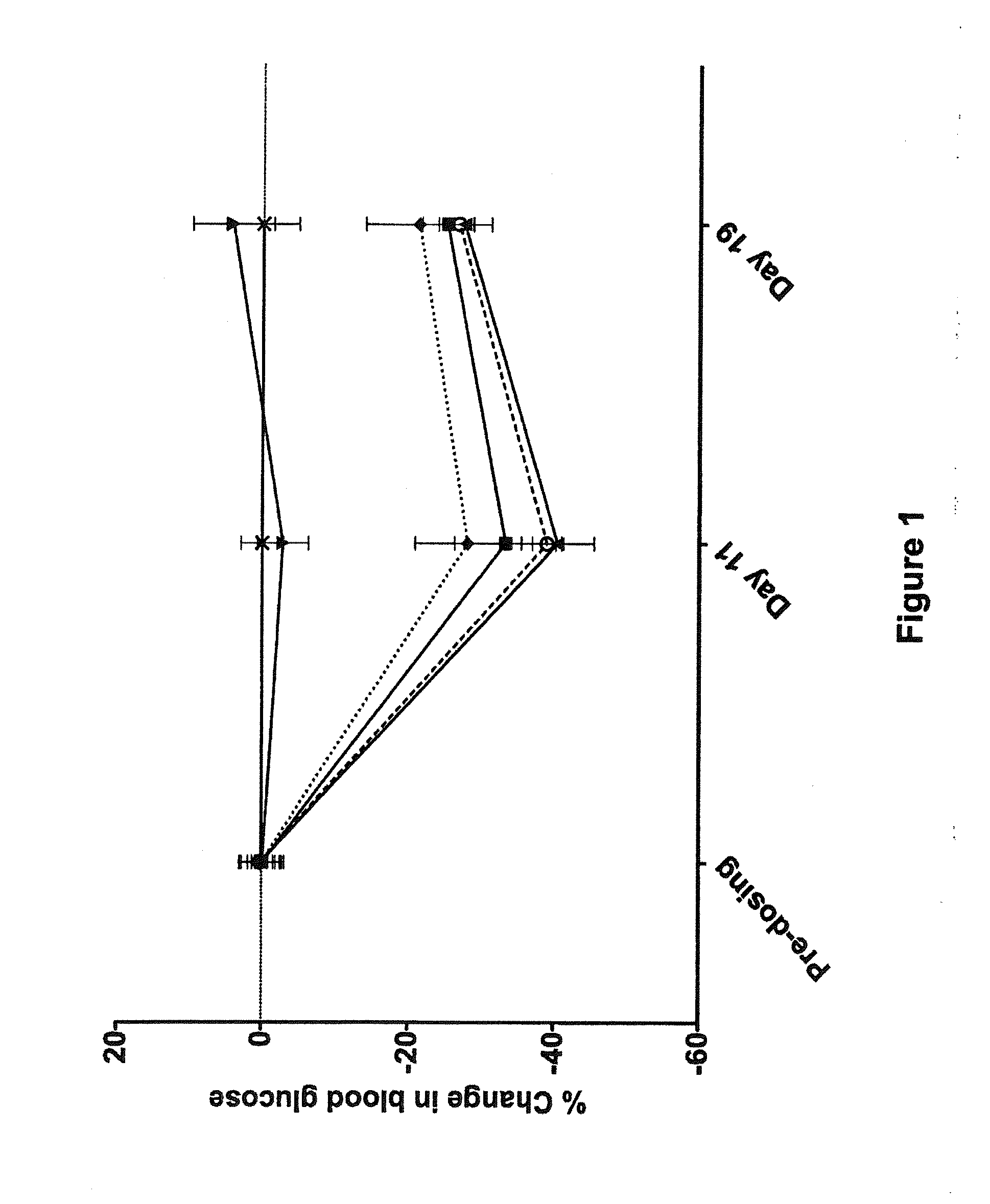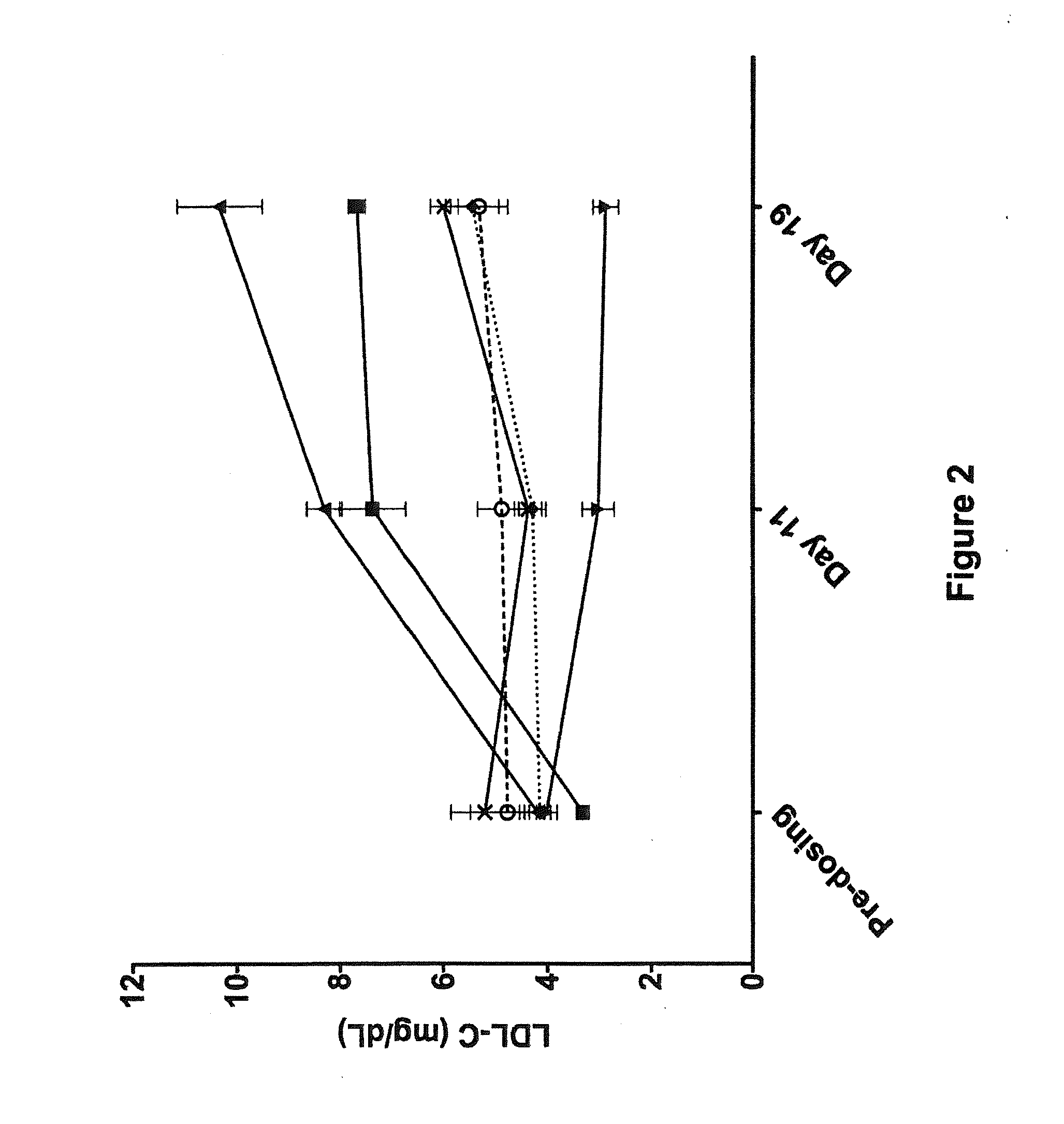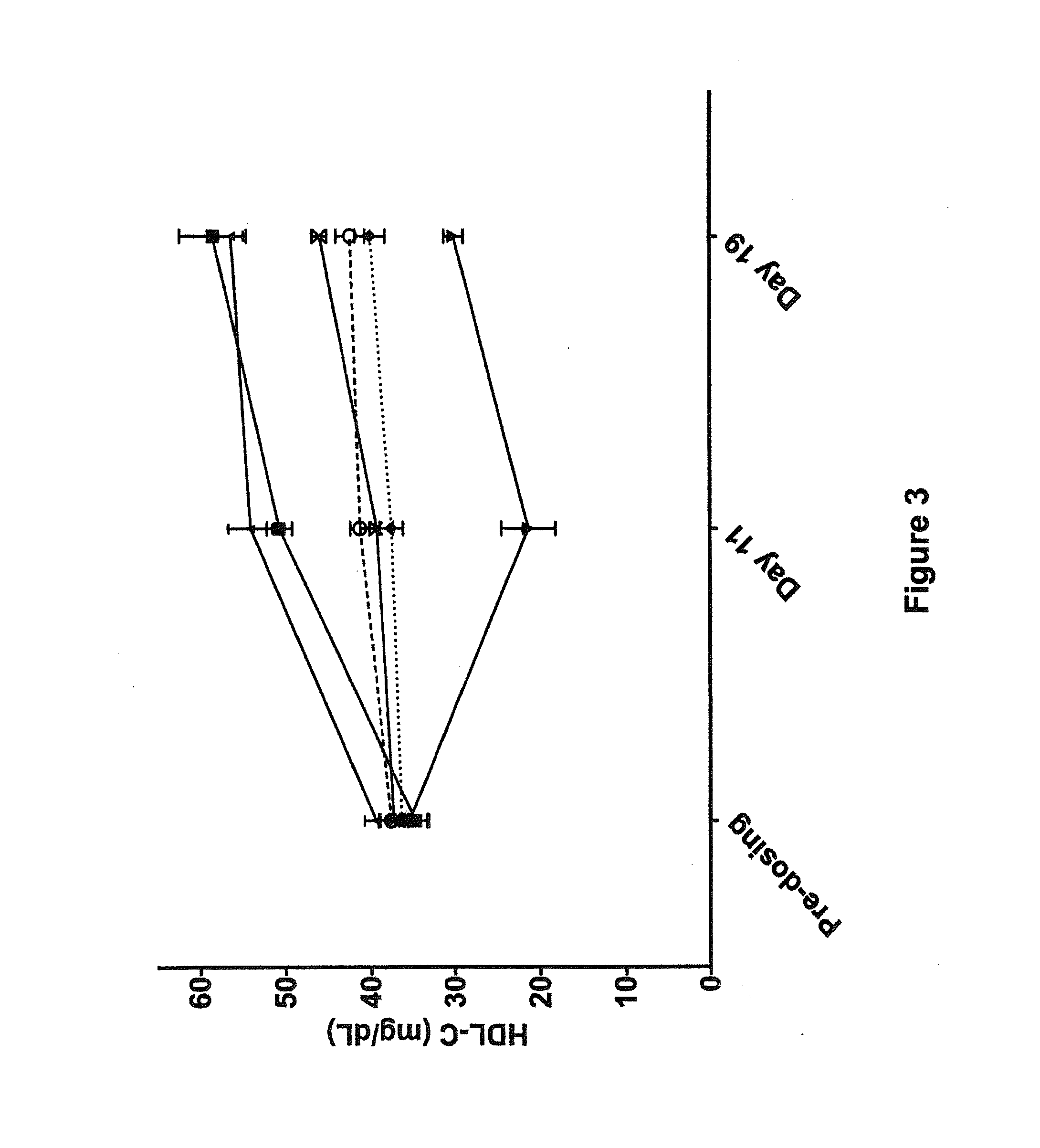Method of Treating Stress Hyperglycemia with Human Antibodies to the Glucagon Receptor
a technology of glucagon receptor and anti-glucagon, which is applied in the direction of antibody medical ingredients, peptides/protein ingredients, peptides, etc., can solve the problems of limiting the therapeutic effect, reducing the medical benefits of therapy, and hampering the achievement of target glycemic control, so as to block the elevation of blood glucose levels, increase blood glucose levels, and reduce blood glucose levels
- Summary
- Abstract
- Description
- Claims
- Application Information
AI Technical Summary
Benefits of technology
Problems solved by technology
Method used
Image
Examples
example 1
Generation of Human Antibodies to Human GCGR
[0278]An immunogen comprising any one of the following can be used to generate antibodies to hGCGR. For example, cells expressing hGCGR were used in certain embodiments as an immunogen to generate antibodies to hGCGR. Additionally, DNA encoding hGCGR was used in certain embodiments as an immunogen to prepare the antibodies of the invention. Furthermore, in certain embodiments, peptides comprising amino acid sequences from the N-terminal domain of hGCGR were utilized as an immunogen to generate antibodies to human GCGR. In addition, in certain embodiments, peptides comprising amino acid sequences from any of the extracellular loop regions EC1, EC2, or EC3, of hGCGR may be utilized as an immunogen to generate antibodies to human GCGR. The cells, DNA, or peptides that were used as immunogens, as noted above, were administered directly, with an adjuvant to stimulate the immune response, to a VELOCIMMUNE® mouse comprising DNA encoding human Imm...
example 2
Heavy and Light Chain Variable Region Amino Acid Sequences
[0281]Table 1 sets forth the heavy and light chain variable region amino acid sequence pairs of selected anti-GCGR antibodies and their corresponding antibody identifiers. Antibodies having the same numerical antibody designation, but differing by a letter suffix of N, B or P refer to antibodies having heavy and light chains with identical CDR sequences but with sequence variations in regions that fall outside of the CDR sequences (i.e., in the framework regions). Thus, N, B and P variants of a particular antibody have identical CDR sequences within their heavy and light chain variable regions but differ from one another within their framework regions.
TABLE 1AntibodySEQ ID NOs:DesignationHCVRHCDR1HCDR2HCDR3LCVRLCDR1LCDR2LCDR3H4H1345N246810121416H4H1617N1820222426283032H4H1765N3436384042444648H4H1321B5052545658606264H4H1321P6652545668606264H4H1327B7072747678808284H4H1327P8672747688808284H4H1328B9092949698100102104H4H1328P10692...
example 3
Variable Gene Utilization Analysis
[0282]To analyze the structure of antibodies produced, the nucleic acids encoding antibody variable regions were cloned and sequenced. From the nucleic acid sequence and predicted amino acid sequence of the antibodies, gene usage was identified for each Heavy Chain Variable Region (HCVR) and Light Chain Variable Region (LCVR). Table 2 sets forth the gene usage for selected antibodies in accordance with the invention.
TABLE 2Antibody IdentifierHCVR / LCVRHCVRLCVRAntibodySEQ ID NOsVHDHJHVKJKH4H1617N18 / 26V1-24D3-9J6V2-28J1H4H1345N 2 / 10V1-24D3-9J6V2-28J1H4H1765N34 / 42V3-48D6-6J6V2-28J1H4H1321P66 / 68V3-30D3-9J6V1-16J4H4H1327P86 / 88V3-7 D3-9J6V1-17J3H4H1328P106 / 108V3-13D3-9J6V1-17J4H4H1331P126 / 128V3-33D3-9J6V1-17J1 / J4H4H1339P146 / 148V3-13D3-9J6V1-6 J1
PUM
| Property | Measurement | Unit |
|---|---|---|
| equilibrium dissociation constant | aaaaa | aaaaa |
| body weights | aaaaa | aaaaa |
| body weights | aaaaa | aaaaa |
Abstract
Description
Claims
Application Information
 Login to View More
Login to View More - R&D
- Intellectual Property
- Life Sciences
- Materials
- Tech Scout
- Unparalleled Data Quality
- Higher Quality Content
- 60% Fewer Hallucinations
Browse by: Latest US Patents, China's latest patents, Technical Efficacy Thesaurus, Application Domain, Technology Topic, Popular Technical Reports.
© 2025 PatSnap. All rights reserved.Legal|Privacy policy|Modern Slavery Act Transparency Statement|Sitemap|About US| Contact US: help@patsnap.com



